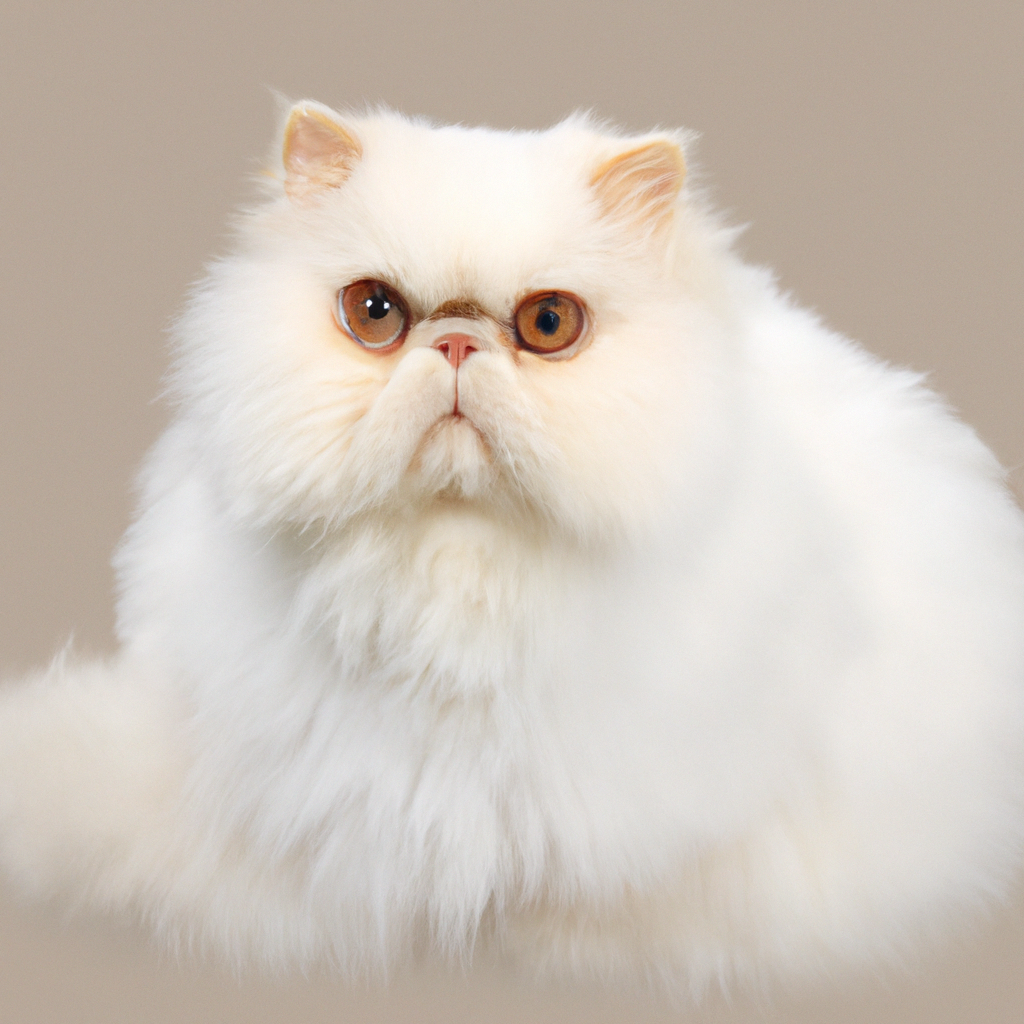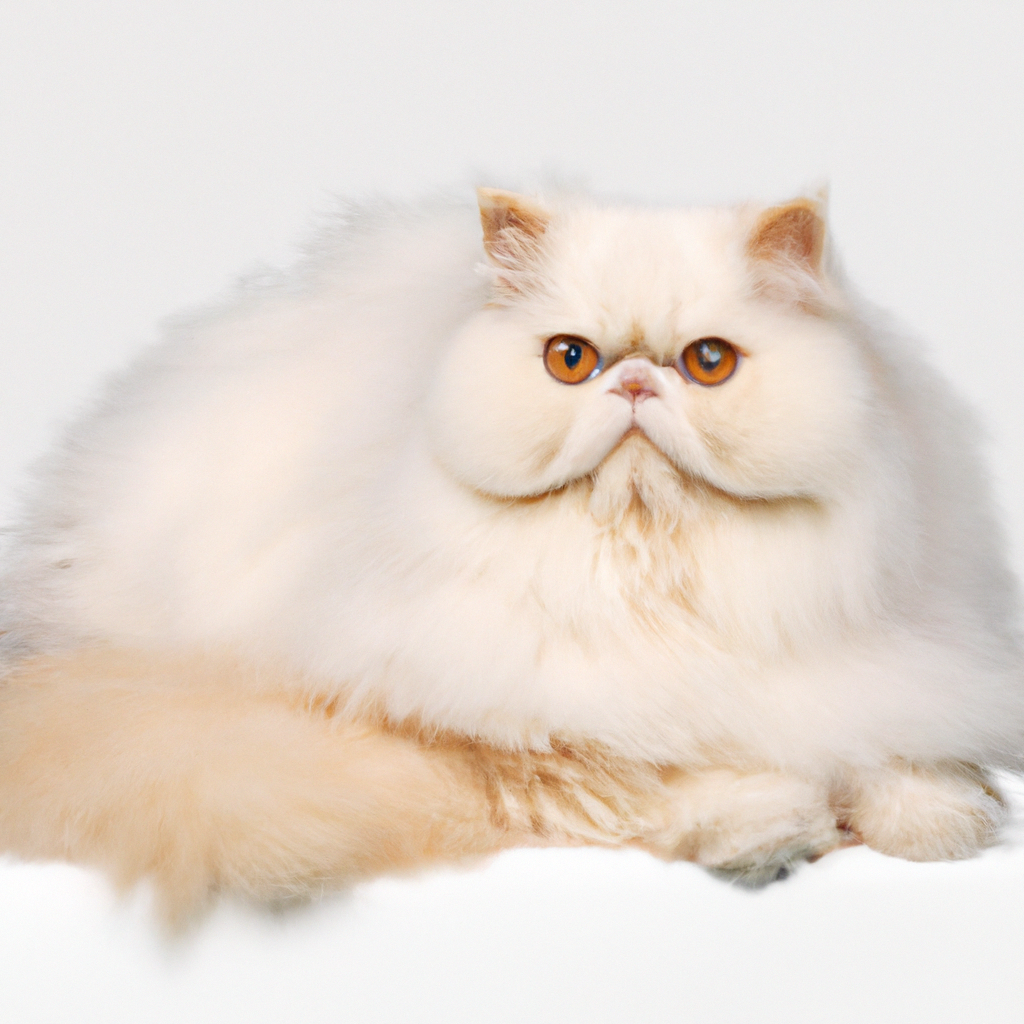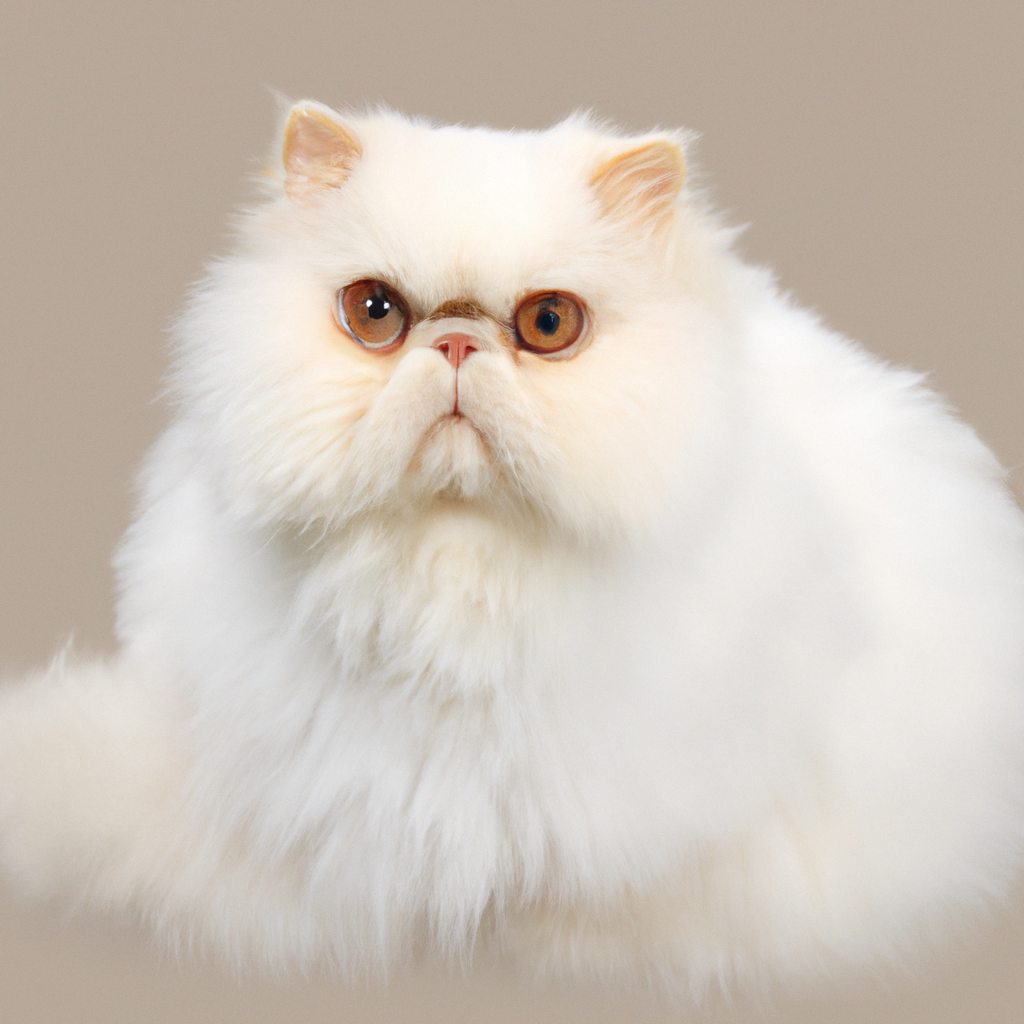Imagine having a furry and affectionate companion who fills your home with love and joy. If you’re a cat lover, you’re in luck! In this article, we’ll explore the many delightful qualities of Persian cats and other beloved feline breeds. From their striking looks and gentle nature to their playful demeanor, these furry friends will undoubtedly win your heart. So, get ready to embark on a journey into the world of feline friends!

Overall Characteristics of Persian Cats
Appearance
Persian cats are well-known for their stunning appearance. They have a distinct round head and short, broad muzzle. Their eyes are large and expressive, ranging in color from blue to copper. One of the most eye-catching features of Persian cats is their luxurious long coat, which comes in a variety of colors and patterns. The overall impression is one of elegance and grace.
Temperament
When it comes to temperament, Persian cats are calm and gentle creatures. They have a laid-back personality and tend to be quiet and reserved. Persian cats are not as energetic or playful as some other breeds, but they make up for it with their sweet and affectionate nature. They enjoy snuggling up with their owners and are known for being loyal companions.
Grooming Needs
The long and thick coat of a Persian cat requires regular grooming to keep it in top condition. Each day, you will need to dedicate some time to combing their fur to prevent matting and tangles. Additionally, periodic baths should be given to keep their coat clean. Due to their facial structure, Persian cats are also prone to eye discharge, so gently cleaning their eyes is necessary.
Health Issues
Like all breeds, Persian cats are prone to certain health issues. One of the most common problems is brachycephalic airway syndrome, which can cause breathing difficulties due to their flat faces. Persian cats are also susceptible to polycystic kidney disease, a genetic disorder. Regular veterinary check-ups and a proper diet can help prevent and manage these health issues effectively.
Different Types of Persian Cats
Traditional Persian
The Traditional Persian is the original breed that comes to mind when people think of Persian cats. They have a round face, large eyes, and a long, flowing coat. Traditional Persians are known for their gentle and calm demeanor, making them great companions. They come in a variety of colors, from solid white to tortoiseshell patterns.
Himalayan Persian
Himalayan Persians, often referred to as Himmies, are a cross between the Persian and Siamese breeds. They have the Persian’s body structure and long coat, but inherit the color point markings of the Siamese breed. Himalayans have a sweet and affectionate personality, and they are known for their striking blue eyes.
Exotic Shorthair
The Exotic Shorthair is a Persian cat with a short, plush coat. They have the same body structure and temperament as the Traditional Persian, but their coat requires less grooming. With their adorable chubby cheeks and round eyes, Exotic Shorthairs have a teddy bear-like appearance. They are known for being friendly, docile, and great with children.
Popular Breeds of Cats
Maine Coon
Maine Coons are known for their large size and rugged appearance. They have a muscular build, a bushy tail, and distinctive tufted ears. Maine Coons are not only beautiful but also highly intelligent and playful cats. They are sociable and get along well with other pets and children, making them a great choice for families.
Siamese
Siamese cats are easily recognizable with their striking blue almond-shaped eyes, sleek bodies, and color point coat pattern. They are known for their vocal nature and love to communicate with their owners. Siamese cats are intelligent and social, enjoying the company of their human companions. They require mental stimulation and plenty of playtime to keep them happy.
Bengal
Bengal cats have a wild and exotic appearance, resembling miniature leopards. They have a beautifully marked coat, with rosettes or marbled patterns. Bengals are active and love to play, often displaying exceptional agility. They are highly curious and enjoy exploring their surroundings. Bengals form strong bonds with their owners and can be both affectionate and mischievous.
Comparison of Persian Cats and Other Breeds
Appearance and Physical Features
Persian cats are known for their unique round head and stunning long coat, which sets them apart from other breeds. Maine Coons, on the other hand, are admired for their large size and majestic appearance. Siamese cats captivate with their striking blue eyes and sleek bodies, while Bengals impress with their exotic and wild-like markings.
Temperament and Personality
When it comes to temperament, Persian cats are calm and gentle, while Maine Coons are known for their friendly and sociable nature. Siamese cats are highly vocal and enjoy interacting with their owners, and Bengals exhibit an adventurous and playful personality.
Grooming Needs and Maintenance
Persian cats require daily grooming to keep their long coats tangle-free and healthy. Maine Coons have a shorter coat that also requires regular grooming but not as much as Persians. Siamese cats have a shorter coat that requires minimal grooming, making them easier to maintain. Bengals have a short, sleek coat that requires minimal grooming as well.
Health Issues and Genetic Traits
Persian cats are prone to brachycephalic airway syndrome and polycystic kidney disease. Maine Coons are generally healthy cats with no breed-specific health issues. Siamese cats may be prone to dental problems and eye conditions. Bengals are usually healthy cats, but may be prone to certain hereditary conditions such as patellar luxation and hypertrophic cardiomyopathy.

Choosing the Right Breed for You
Considerations for Persian Cats
If you’re looking for a calm and affectionate companion who enjoys a relaxed environment, a Persian cat may be the perfect choice for you. However, keep in mind that their grooming needs can be demanding and require daily attention. Persian cats also need a quiet and stress-free environment to thrive.
Considerations for Other Breeds
If you prefer an active and playful cat, the Maine Coon or the Bengal may be more suitable for you. Both breeds enjoy interactive play and mental stimulation. Siamese cats are great for those who enjoy a chatty and sociable companion. Consider your lifestyle, available time for grooming, and the energy levels of different breeds before making your decision.
Persian Cats as Family Pets
Adaptability to Home Environment
Persian cats are adaptable and can thrive in a variety of home environments. They are generally more suited to quieter households where they can enjoy a calm and peaceful atmosphere. Providing them with their own designated spaces and cozy spots for relaxation is essential.
Interaction with Family Members
Persian cats are known for their affectionate and gentle nature, making them excellent family pets. They enjoy being around their human companions and will happily lounge beside you or curl up in your lap. Persian cats are patient and tolerant with children, making them a suitable choice for families.
Compatibility with Other Pets
Persian cats are generally tolerant of other pets and can get along well with them. However, they prefer a peaceful environment and may become stressed in situations with dominant or overly-energetic pets. Proper introduction and gradual integration are key to ensuring a harmonious multi-pet household.
Caring for a Persian Cat
Feeding and Nutrition
Proper nutrition is essential for the health and well-being of Persian cats. Provide them with high-quality cat food formulated for their specific needs, such as a diet designed for long-haired breeds. Ensure they have access to fresh water at all times and monitor their weight to prevent obesity, which Persians can be prone to.
Exercise and Playtime
While Persian cats are not as energetic as some other breeds, they still benefit from regular exercise and playtime. Engage them in interactive play with toys and provide scratching posts or climbing trees to encourage physical activity. Keep in mind that they may prefer shorter play sessions, as they are not as high-energy as other breeds.
Grooming and Coat Maintenance
The long and luxurious coat of a Persian cat requires regular grooming to keep it in top condition. This includes daily combing or brushing to prevent matting and tangles. Be gentle while grooming and pay extra attention to the areas prone to matting, such as behind the ears and under the chin. Regular baths are also necessary to keep their coat clean.
Healthcare and Veterinary Needs
Regular veterinary check-ups are crucial for the overall health of your Persian cat. Vaccinations and preventive treatments for parasites should be kept up to date. Due to their unique facial structure, Persian cats may also require specific dental care to prevent dental issues. It’s important to establish a good relationship with a trusted veterinarian to ensure proper healthcare for your cat.
Caring for Other Breeds
Specific Dietary Requirements
Different cat breeds may have specific dietary requirements. Maine Coons, for example, benefit from a diet tailored to their large size and muscular build. Siamese cats may have a higher metabolism and require a diet that helps maintain their lean body condition. Bengals, being active cats, may need a diet higher in protein to support their muscle development.
Exercise and Mental Stimulation
Each breed has its own activity levels and requirements for exercise and mental stimulation. Maine Coons and Bengals need plenty of opportunities for play and exercise to keep them physically and mentally engaged. Siamese cats thrive on interactive play and puzzles that challenge their intelligence. Cater to the exercise and mental stimulation needs of your specific breed to keep them happy and healthy.
Coat and Grooming Needs
The grooming needs of other breeds vary. Maine Coons have a dense and water-resistant coat that requires regular brushing to prevent matting and to remove loose hair. Siamese cats have a shorter coat that requires minimal grooming, while Bengals have a shorter, sleek coat that also requires minimal grooming. Tailor your grooming routine to the specific needs of your breed.
Healthcare Considerations
Different breeds may have different predispositions to certain health conditions. For example, Maine Coons can be prone to hip dysplasia, while Siamese cats may be susceptible to dental issues. Stay informed about potential health concerns for your breed and work closely with your veterinarian to ensure appropriate preventive care and early detection of any health issues.
Bringing a New Cat Home
Preparing the Home Environment
Before bringing a new cat home, it’s important to prepare the environment to ensure their safety and comfort. Set up a cozy sleeping area, provide litter boxes in easily accessible locations, and secure any potentially hazardous areas. Invest in cat furniture and scratching posts to provide vertical spaces for climbing and scratching.
Introducing the Cat to the Family
When introducing a new cat to the family, it’s important to follow a gradual and controlled approach. Provide a separate space for the cat initially, gradually allowing supervised interactions with family members and other pets. Use positive reinforcement and treats to create positive associations and help the cat feel comfortable in their new home.
Establishing Routines and Boundaries
Establishing routines and boundaries is essential for a well-adjusted and happy cat. Set consistent mealtimes, playtimes, and bedtime routines to provide structure. Establish boundaries and house rules, such as areas that are off-limits for the cat, to ensure their safety and maintain a harmonious household.
Resources for Cat Owners
Books and Publications
There are many books and publications available that provide valuable information on cat care and specific breed characteristics. Some highly recommended titles include “The Persian Cat” by Joanne Mattern, “Maine Coons: Everything About Purchase, Care, Nutrition, Breeding, Behavior, and Training” by Carol Himsel Daly, and “Siamese Cats as Pets: Siamese Cat Facts & Information, Where to Buy, Health, Diet, Lifespan, Types, Breeding, Care and more!” by Taylor David.
Online Communities and Forums
Online communities and forums are a great resource for connecting with other cat owners and sharing experiences. Websites such as Catster, The Cat Site, and Reddit’s r/Cats provide forums and communities where cat owners can ask questions, seek advice, and share stories about their cats.
Local Cat Clubs and Associations
Local cat clubs and associations can provide valuable resources and support for cat owners. They often organize cat shows, events, and educational seminars. Getting involved with these clubs allows you to connect with other cat enthusiasts, learn more about specific breeds, and access a network of knowledgeable cat experts.
In conclusion, Persian cats are stunning and elegant companions known for their calm temperament and unique appearance. When choosing a breed, it’s essential to consider factors such as grooming needs, temperament, and overall health. By understanding the specific characteristics and requirements of different breeds, you can make an informed decision and provide the best care for your feline friend. Remember, regardless of the breed you choose, cats bring joy, love, and companionship to our lives.
